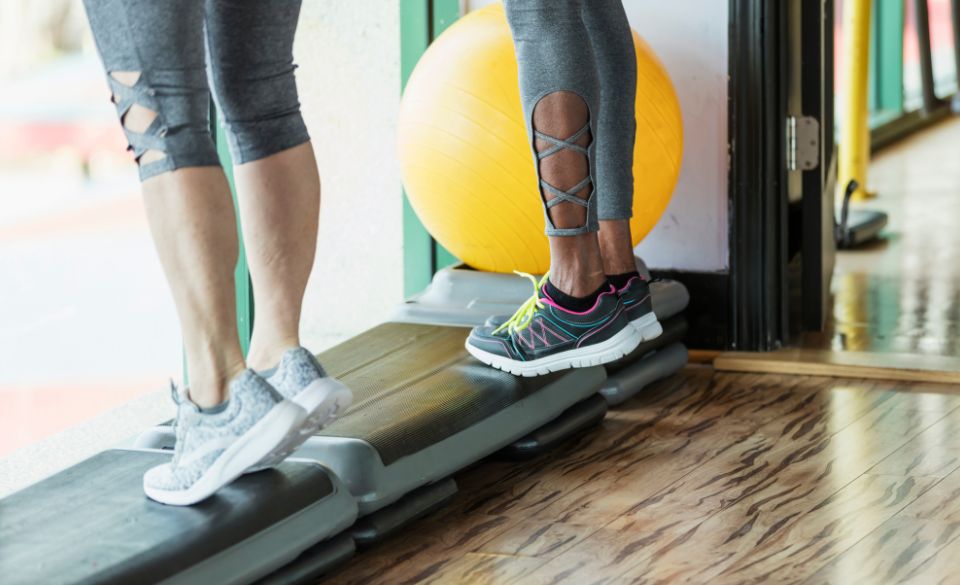
Best Calf Exercises for Runners
Page Contents
As a runner, you understand the importance of having strong and resilient muscles to support your performance and prevent injuries. While many runners focus on building strength in their quadriceps, hamstrings, and glutes, it’s crucial not to neglect another essential muscle group: the calves. Strong calf muscles are vital for generating power, absorbing impact, and maintaining proper running form. In this article, we’ll delve into why strong calves are important for runners, the consequences of weak calf muscles, how often you should train your calves, and, most importantly, the best calf exercises to incorporate into your training routine.
Why are Strong Calves Important for Runners?
Your calf muscles, composed of the gastrocnemius and soleus, play a pivotal role in running mechanics. They are responsible for propelling you forward, absorbing the impact of each stride, and providing stability during the running gait. Having strong calves allows you to generate more power and efficiency in each push-off, leading to improved speed and performance.
Strong calves also help prevent common running injuries, such as Achilles tendinitis and calf strains. By strengthening these muscles, you enhance their ability to withstand the repetitive stress and strain that running places on them. Additionally, strong calves contribute to better overall muscular balance and reduce the risk of compensatory injuries in other areas of the body, such as the knees and hips.
The Consequences of Weak Calf Muscles
When your calf muscles are weak, it can significantly impact your running performance and increase the risk of injury. Weak calves can lead to decreased power output and propulsion during each stride, resulting in reduced speed and efficiency. It may also contribute to an inefficient running gait, as your body compensates for the lack of calf strength by relying more on other muscles.
Furthermore, weak calf muscles are more prone to fatigue and overuse injuries. As your calf muscles struggle to meet the demands of running, they can become strained or overloaded. This can lead to conditions such as Achilles tendinitis, calf strains, and shin splints. By neglecting calf strength, you leave yourself vulnerable to these common running injuries that can hinder your progress and sideline your training.
How Often Should You Train Your Calf Muscles?
To develop strong calf muscles, it’s important to incorporate regular strength training exercises into your training routine. Aim to train your calves two to three times per week, allowing for adequate recovery between sessions. However, it’s essential to listen to your body and adjust the frequency and intensity based on your individual needs and recovery abilities.
Keep in mind that calf muscles are accustomed to a high volume of work from running, so it’s crucial to balance your calf training with proper rest and recovery. Overtraining your calf muscles can lead to fatigue and increased injury risk. Gradually increase the intensity and resistance of your calf exercises over time, and always prioritize proper form and technique to maximize the effectiveness of your training.
Best Calf Muscle Exercises for Runners
1. Calf Raises: Calf raises are a classic exercise that targets the calf muscles. Stand with your feet shoulder-width apart, engage your core, and rise up onto the balls of your feet. Hold for a moment at the top, feeling the contraction in your calves, and then lower back down to the starting position. You can perform calf raises on flat ground or on an elevated surface, such as a step or stair, to increase the range of motion.
2. Jump Rope: Jumping rope is an excellent cardio exercise that also works your calf muscles. Grab a jump rope and start jumping with both feet, keeping a steady rhythm. Focus on pushing off the balls of your feet and using your calf muscles to propel yourself off the ground. Jump rope is not only a great calf workout but also a fun and effective way to improve your overall cardiovascular fitness.
3. Calf Stretching: While stretching is not a strengthening exercise, it is crucial for maintaining flexibility and preventing tightness in the calf muscles. Perform calf stretches by placing one foot forward and keeping the heel of the back foot on the ground. Lean forward, feeling the stretch in your calf. Hold for 20 to 30 seconds and then switch to the other leg. Repeat this stretch several times on each leg, especially after your runs.
4. Calf Raises on an Incline: Performing calf raises on an incline surface, such as a ramp or a step, adds an extra challenge to the exercise. Position your toes on the edge of the incline with your heels hanging off. Rise up onto your toes, lifting your heels as high as you can, and then lower back down. This variation targets the calf muscles from a different angle and helps develop strength and endurance.
5. Standing Calf Raises: Standing calf raises are another effective exercise for targeting the calf muscles. Stand on the edge of a step or raised surface with your heels hanging off. Hold onto a railing or wall for support if needed. Rise up onto your toes, lifting your heels as high as possible, and then lower them back down. Focus on the contraction in your calf muscles throughout the movement. You can perform standing calf raises with both feet together or individually for an added challenge.
6. Calf Press on Leg Press Machine: If you have access to a leg press machine, you can use it to target your calf muscles effectively. Sit on the leg press machine and position your feet on the platform with your toes pointing forward. Push the platform away from you by extending your knees, and then flex your ankles to bring your toes towards your shins, focusing on contracting your calf muscles. Slowly return to the starting position and repeat for the desired number of repetitions.
7. Calf Jumps: Calf jumps are a plyometric exercise that helps improve explosive power and strength in the calf muscles. Stand with your feet hip-width apart and slightly bend your knees. Jump explosively off the ground, pushing through the balls of your feet, and land softly with a slight bend in your knees. Repeat the jumps in quick succession, focusing on using your calf muscles to generate power and height.
8. Calf Foam Rolling: Foam rolling is an excellent way to release tension and tightness in the calf muscles. Use a foam roller and place it beneath your calf. Apply pressure and roll the foam roller along the length of your calf, pausing on any tight or sore spots. Continue rolling for a few minutes on each leg, ensuring you cover the entire calf area. Foam rolling can help improve flexibility, increase blood flow, and reduce muscle soreness in the calves.
Final Words & Tips
Remember to warm up before performing calf exercises by engaging in light cardiovascular activity and dynamic stretches. Start with a weight or resistance level that challenges you but allows you to maintain proper form. Gradually increase the intensity and resistance as your calf muscles get stronger. It’s essential to listen to your body and adjust the exercises and training frequency based on your individual needs and recovery ability.
Incorporating these best calf exercises into your training routine will help you build strength, power, and endurance in your calf muscles. Strong calves not only enhance your running performance but also contribute to better stability and reduce the risk of calf-related injuries. So, lace up your running shoes, give these exercises a try, and enjoy the benefits of strong and resilient calf muscles in your running journey. Keep training, stay consistent, and remember to have fun along the way.




